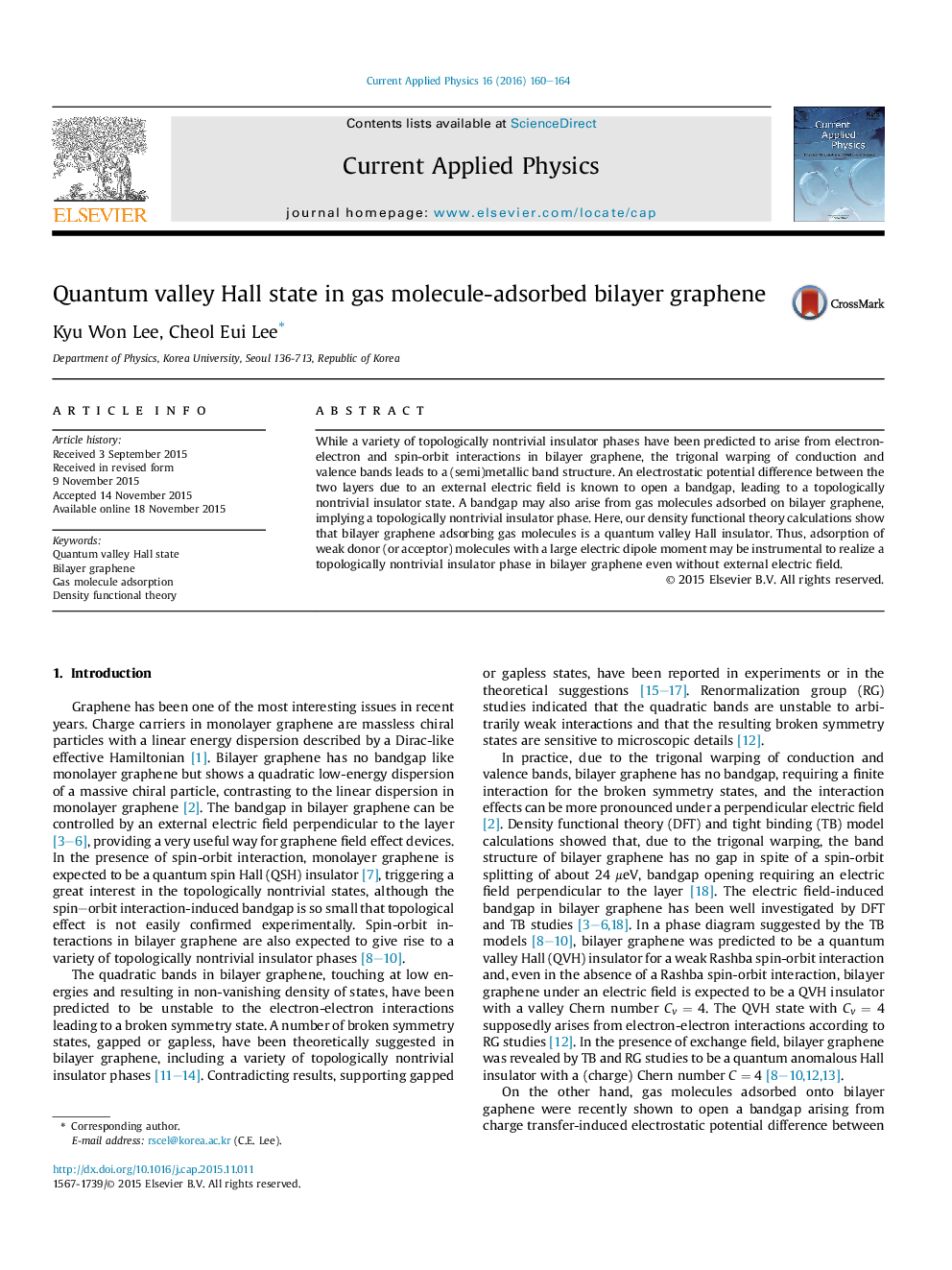| Article ID | Journal | Published Year | Pages | File Type |
|---|---|---|---|---|
| 1785950 | Current Applied Physics | 2016 | 5 Pages |
Abstract
While a variety of topologically nontrivial insulator phases have been predicted to arise from electron-electron and spin-orbit interactions in bilayer graphene, the trigonal warping of conduction and valence bands leads to a (semi)metallic band structure. An electrostatic potential difference between the two layers due to an external electric field is known to open a bandgap, leading to a topologically nontrivial insulator state. A bandgap may also arise from gas molecules adsorbed on bilayer graphene, implying a topologically nontrivial insulator phase. Here, our density functional theory calculations show that bilayer graphene adsorbing gas molecules is a quantum valley Hall insulator. Thus, adsorption of weak donor (or acceptor) molecules with a large electric dipole moment may be instrumental to realize a topologically nontrivial insulator phase in bilayer graphene even without external electric field.
Related Topics
Physical Sciences and Engineering
Physics and Astronomy
Condensed Matter Physics
Authors
Kyu Won Lee, Cheol Eui Lee,
